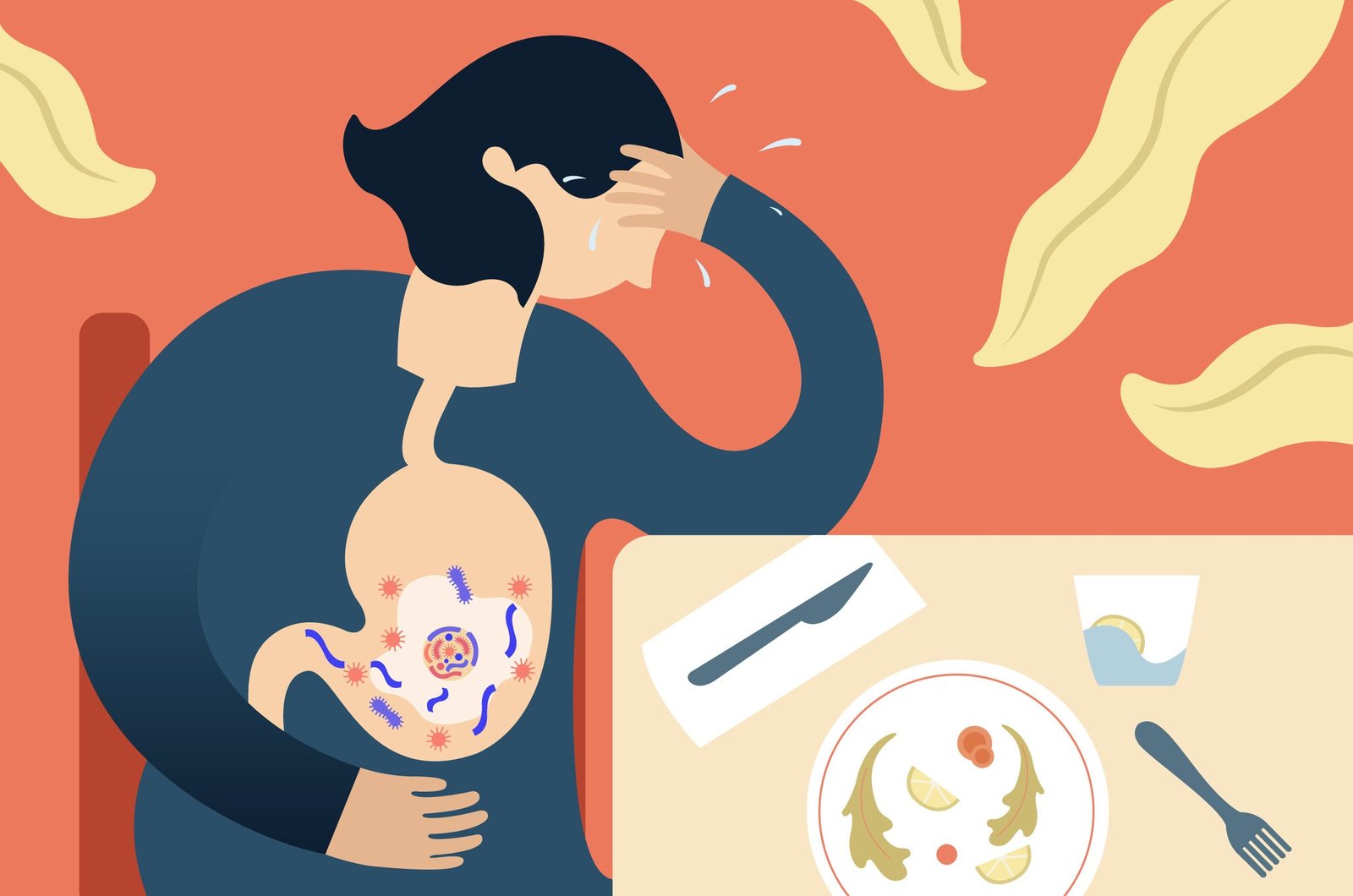Food poisoning
Every year, one in 10 people worldwide falls ill after eating contaminated food due to food poisoning, resulting in the death of more than 420,000 people, children are the most affected, with 125,000 children under the age of five dying each year. Most of these cases are caused by diarrheal diseases. Other serious consequences of food poisoning include kidney failure and sometimes death.
What is food poisoning?
It is a foodborne disease, which is any disease resulting from consuming food contaminated with pathogenic microorganisms (microbes).
What are pathogenic microorganisms?
They are organisms that cannot be seen with the naked eye, such as bacteria, viruses, and parasites. They can cause diseases by multiplying and secreting toxins in food and eating this food contaminated with toxins or by multiplying in food and eating contaminated food in large numbers, causing them to enter the body and cause infection.
Many foodborne pathogens cause diseases, the most famous of which are (Salmonella, Clostridium, Listeria, E. coli, Staphylococcus)
What causes food poisoning?
All foods naturally contain small numbers of microorganisms. However, unsanitary and improper practices in handling food during its preparation or improper food cooking can lead to the presence or proliferation of microorganisms in numbers large enough to cause illness or poisoning.
What are the most important symptoms of food poisoning?
Symptoms can be mild with recovery within days, or severe leading to hospitalization and death in some patients.
Symptoms vary depending on the source of the disease and often include: Diarrhea – Stomach pain – Vomiting – Fever.
Because most cases of poisoning have mild symptoms and last for a short period, medical care is usually not sought for food poisoning cases except for a small percentage of cases, which are the most serious and have severe symptoms.
When do symptoms appear?
The timing of symptoms varies depending on several factors such as the type and number of pathogens and the nature of the infected person’s body. Usually, symptoms appear from hours to days after eating contaminated food and sometimes weeks (in the case of chronic foodborne diseases).
How can foodborne diseases be detected?
Determining whether or not an illness is transmitted through food is difficult because it may not develop and appear until days or even weeks after exposure to pathogens, and the blame may be wrongly placed on the most recent meal eaten.
One way to determine whether an illness is transmitted through food is to find the agent that caused the disease in a food sample the patient ate. This is not always possible because the leftover Food or an analytical technique to detect the agent may not be available.
Another way to determine whether or not an illness is transmitted through food is when a group of cases occurs among people with nothing in common except eating the same food.
Guidance for consultation and training
We have the knowledge and experience to qualify institutions and individuals to comply with the requirements of the Saudi Standards, Quality and Environment Organization, the Saudi Food and Drug Authority, and other entities that impose legal and mandatory requirements in the Saudi market to achieve quality and the Kingdom’s Vision 2030.
To qualify your facility, train its personnel and fulfill the required documents to implement the quality and ISO systems.


